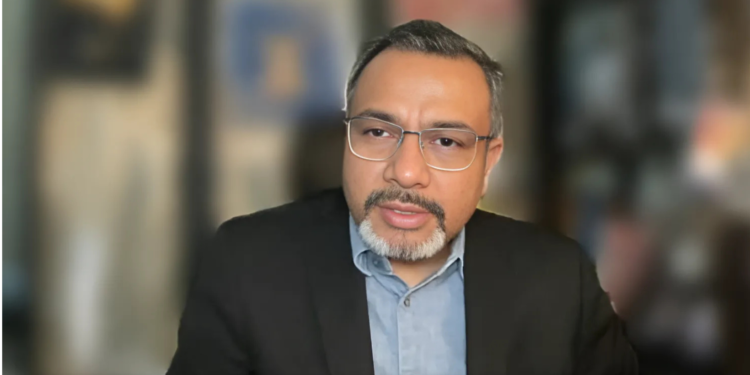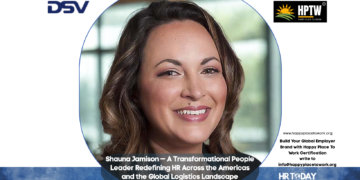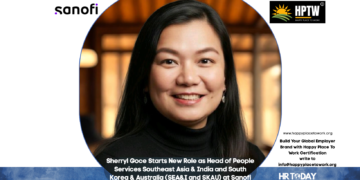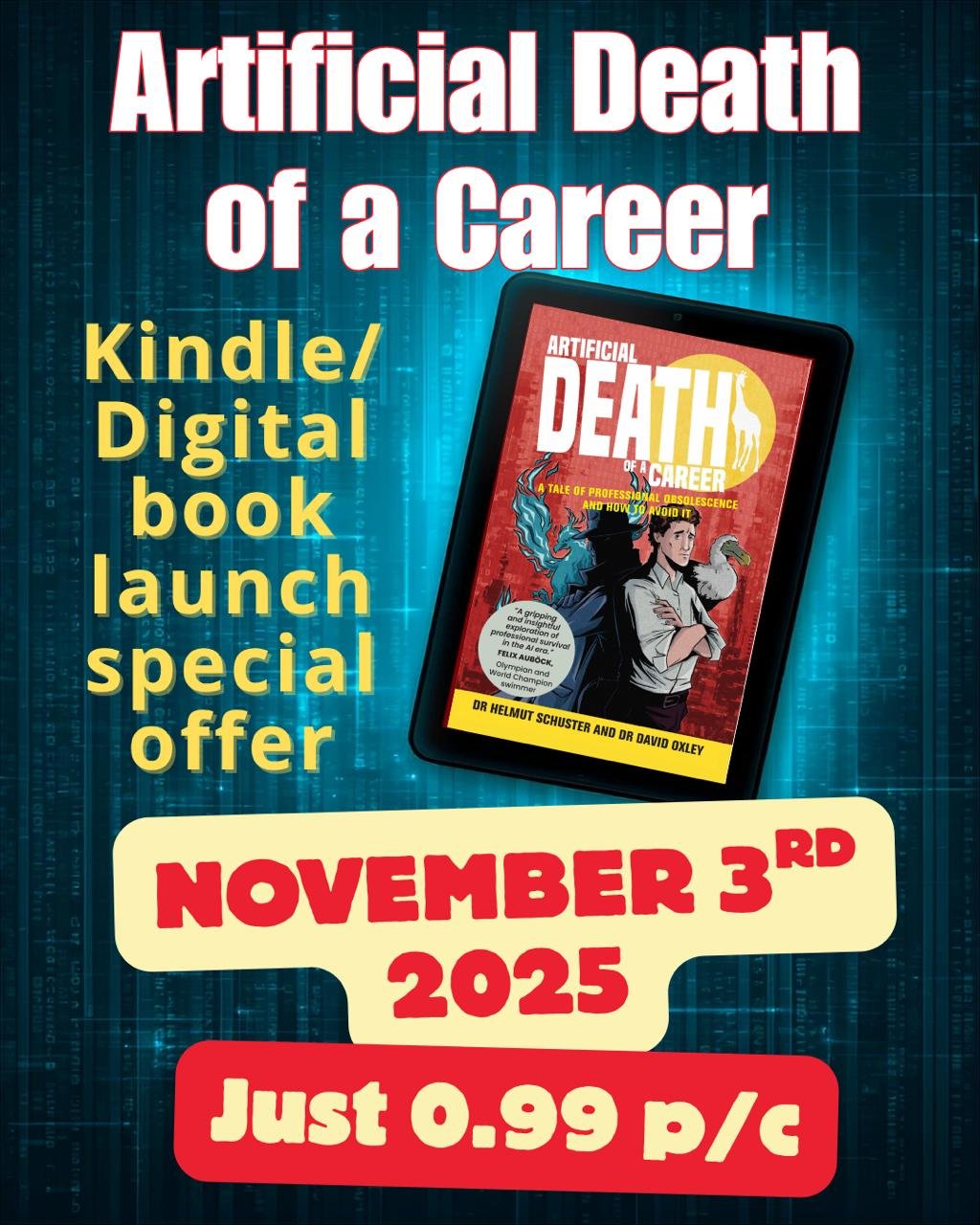In this episode of the HR TODAY Leadership Insight Podcast, Ashish engages in a candid and wide-ranging conversation with Ashutosh Sinha—a seasoned leadership strategist, executive coach, AI evangelist, and author of the international bestseller “Breakthrough: The Framework for an Inspired Career.” With over three decades of global experience across KPMG, Landmark Group, Deloitte, and Reliance, Ashutosh currently leads Seintiv Talent Solutions as its Managing Partner & Chief People Officer.
Ashish: To begin, could you tell us a bit about Seintiv Talent Solutions and what “Seintiv” stands for?
Ashutosh: Absolutely. Seintiv is a boutique global business and talent advisory firm. We’re headquartered in the U.S., but we operate in the U.K., Kosovo, Dubai, India, Saudi Arabia, and other parts of the world. We work with clients on simplifying complex business and people challenges. The firm has three core verticals: one focuses on human capital and business strategy—things like culture diagnostics, future workforce planning, and employment lifecycle journeys. The second vertical offers career advisory services, helping professionals—especially those at mid to senior levels—navigate career inflection points. The third vertical is our executive search practice.
The name “Seintiv” itself is a combination of two ideas. “Sein” is inspired by the River Seine in France—known for spreading energy and joy to the people who live along its banks. “Tiv” is drawn from a hardworking African tribe that cultivates crops in highly infertile land. So our name reflects our philosophy: we work hard and bring happiness while solving the most difficult problems for our clients.
Ashish: Let’s dive into today’s theme: Gen Z. How is this generation reshaping expectations in the workplace?
Ashutosh: First off, I often say jokingly that I’m a Gen Z at heart. And in many ways, that mindset is what’s needed today. What I find most fascinating is how Gen Z thinks and processes. Their ability to multitask and think in parallel is significantly higher than previous generations. But that also leads to misunderstandings. Many assume Gen Z are distracted or unfocused, but that’s not true—they’re simply wired to absorb more inputs at once.
We’re operating in a multi-generational workforce. If we don’t understand Gen Z’s expectations, we risk alienating an entire generation. Gen Z professionals want freedom—not just physical freedom in terms of remote or hybrid models, but freedom to shape their careers. They want to engage with people and work in their own space and time. Traditional structures of fixed 9-to-5 jobs or linear career ladders just don’t resonate anymore.
Ashish: But doesn’t multitasking reduce efficiency?
Ashutosh: That’s a great point. You’re right that traditional multitasking—trying to do several things at once—can be inefficient. Neuroscience supports that. But Gen Z doesn’t multitask in that old sense. They practice what I call “short-burst sequential tasking.” It’s the ability to move between different tasks quickly and productively. So they may be writing code, then jump into a creative brainstorm, then respond to a Slack message—all with minimal lag.
It’s not chaos—it’s agility. When done right, this improves both speed and output because they’re not waiting around for responses or locked into just one task.
Ashish: You’ve talked a lot about “inspired careers.” So what do you believe Gen Z is truly seeking—purpose, perks, or progression?
Ashutosh: That’s a tough one because all three matter. But in my experience, purpose is becoming the dominant factor, especially after the pandemic. Gen Z professionals want to feel they’re contributing to something meaningful. That said, their backgrounds matter. Someone coming from financial pressure may prioritize progression or perks initially. But once a base level of security is achieved, the focus shifts toward impact.
Let me give you an example. In the earlier generations—like the baby boomers—it was about survival. Gen Z is different. Many of them are fortunate to have a certain level of financial cushioning, whether through family or the ecosystem. So they don’t just ask, “Where can I work?” but “Where can I matter?” And when you align purpose with learning and recognition, perks and progression follow naturally.
Ashish: What are the biggest misalignments you see between traditional corporate models and Gen Z expectations?
Ashutosh: The key gap is in how work is structured. Traditional corporates operate with a heavy emphasis on hierarchy, specialization, and stability. This worked when you had linear careers. But Gen Z doesn’t think that way. They want to experiment, explore, and then decide.
Earlier, we spoke about T-shaped careers—where you specialize in one domain and then broaden out. Now, I talk about “I-shaped careers.” This model encourages breadth early in the career. Let them explore HR, finance, marketing, data analytics—whatever they’re curious about. Then once they identify their strengths, help them go deep. And later in their career, give them space to broaden again. It’s about helping them discover, not dictating their path.
Ashish: But many companies interpret exploration as confusion. How can we change that mindset?
Ashutosh: That’s the real challenge. Many managers still believe if someone doesn’t pick a lane early, they’re indecisive. But that’s simply outdated. I’ve seen organizations that let people rotate across departments, and the result is phenomenal. They not only retain talent longer but also build more holistic, adaptable professionals.
Exploration is not confusion. It’s experiential clarity. We don’t expect students to choose their life partner at age 18—why should we expect them to choose a lifelong career path then?
Ashish: How early should this exploration start?
Ashutosh: Ideally, in high school or early college. But it must come with context and reflection. For example, if I take a 10-year-old to NASA, she might be wowed by the rockets but won’t know if she likes space science or just the noise and visuals.
Universities abroad now offer industrial immersion for a full year. You step away from academics and work in a real role. That’s the kind of exposure we need in India too. At Seintiv, we have a program where students can explore different industries and roles before making choices.
Ashish: Based on your coaching experience, how do you work with Gen Z professionals who feel disengaged?
Ashutosh: That happens more often than we realize. The first step is discovery. Many of them feel disengaged but don’t know why. I remember one case—a young engineer at a tech firm who told me she was burned out. She described her days as chaotic and directionless. But after about 20 minutes of probing, we realized the real issue wasn’t workload. She lacked a sponsor—someone to affirm her strengths and guide her path. She was actually passionate about pre-product development, but no one had given her space to focus on it.
Once she found a mentor and was assigned relevant work, her entire outlook shifted. Engagement is about alignment, not just activity.
Ashish: Let’s shift to AI. You’ve led AI initiatives across the employee lifecycle. How do you see it helping Gen Z and HR?
Ashutosh: AI should be seen as an extension of human intelligence, not a replacement. I often say it’s part of a 360-degree intelligence model. Think of AI as covering 90 degrees of that circle—it handles the repetitive, operational tasks. The remaining 270 degrees—empathy, ideation, ethics, judgment—that’s still ours.
The key is to leverage AI to free up mental bandwidth. Let it handle your scheduling, data parsing, or performance dashboards—so you can think, create, and connect better. But if we outsource our thinking to AI completely, we’ll lose our edge. AI can execute. But we must continue to ideate, prompt, and lead.
Ashish: What leadership style resonates most with Gen Z?
Ashutosh: Without a doubt—situational leadership. Gen Z doesn’t respond to authoritarianism. They appreciate leaders who adapt to the context, who listen, and who offer flexibility. You can’t manage every team member the same way. You need to be fluid, just like they are.
And empathy matters more than ever. A Gen Z employee is more likely to follow someone who understands their individuality than someone with a prestigious title.
Ashish: What kinds of roles do you think Gen Z will gravitate toward in the next 5–10 years?
Ashutosh: Roles that involve problem-solving with multiple constraints. Think systems thinking, design thinking, policy shaping, ethical AI, and sustainability. Anything that requires deep thought, not just execution. Gen Z wants to work where they can think and make an impact, not just follow SOPs.
To support this, organizations need to adopt hyper-personalized learning paths. Think microlearning, adaptive content, and contextual learning—designed for the learner, not for the system.
Ashish: As we close, one piece of advice for Gen Z professionals—and one for the CXOs managing them?
Ashutosh: I’ll give one piece of advice for both—embrace each other’s intellect. Gen Z needs to stay open to learning. Nothing will come on a platter. Show hunger, ask questions, and do the hard work.
CXOs, on the other hand, need to stop underestimating Gen Z. This is a generation with high processing speed and rich perspectives. With the right support, they can do amazing things. The magic lies in meeting each other halfway.
Rapid Fire with Ashutosh Sinha
One Gen Z trait you admire most: Fluidity.
One corporate myth Gen Z is breaking: That they’re confused.
Most overrated buzzword about Gen Z: Distracted.
Your leadership mantra: Keep your mind open, stay curious, and embrace change.
Book recommendation: Atomic Habits by James Clear. It’s a brilliant guide for anyone looking to build lasting, meaningful change through micro-habits.
If you gave a TED Talk just for Gen Z: Discover Yourself for Your Success.
Ashish: Thank you so much, sir. This has been an enriching and eye-opening conversation for me and I’m sure for all our listeners.
Ashutosh: Thank you, Ashish. Your questions were excellent, and I truly enjoyed this dialogue. Kudos to the HR TODAY team for making these important conversations happen.
Read Also : HR Is Not a Support Function—It’s the CEO’s Most Powerful Growth Engine
The Fine Balance: Navigating Work, Life, and Mental Wellbeing
From Gatekeeping to Gateway Building: Transforming How Organisations Create Access
Leadership In Talent Management: A Powerful Driver for Economic Growth











